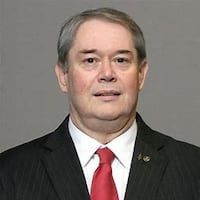Recently some committee members reached out and asked residents in the community about their favorite things and what is needed in Middletown. Among the favorite things:
Proximity to Cincinnati and Dayton.
Great and friendly people.
The city’s history.
It’s potential.
Its people and how they love their history and community.
Some suggestions of what is needed:
Risk takers.
Innovators.
A dog park.
A more positive attitude and that Middletown knows it’s a great place to live.
More downtown development.
Open minds.
Afterschool programs.
A vibrant start-up community.
Children that are engaged.
Manufacturing/entreprenueral incubators.
More coordination.
Hope.
Urban living, recreation, and entertainment.
Riverfront development.
Source: Middletown Moving Forward and the Community-Building Institute
HOW TO GET INVOLVED
What’s your idea for Middletown’s brighter future? Submit ideas online at www.whatifmiddletown.com.
Over the next few months at various community events, Middletonians will have a chance to share their ideas about how to make the city better and improve the quality of life.
Middletown Moving Forward, the city’s community improvement corporation, is teaming up with the Community-Building Institute and other community groups to gather residents’ input so that a vision and action plan can be developed to improve the city.
Nearly 50 city, business and community leaders met Thursday for a kick-off meeting at Atrium Medical Center to launch this community visioning process.
Calista Smith, MMF’s interim director, said the community visioning process is a continuation of a trip by city leaders to Greenville, S.C. in the spring of 2014. While they learned a lot about Greenville’s economic development successes, the trip opened up the group’s eyes as they saw other community things that were needed in Middletown.
Among those topics were arts and culture; diversity and inclusion; economy and jobs; education; environment, beautification and recreation; health, wellness and safety; housing and neighborhoods; and infrastructure and transportation. Smith said that all topics are equally important to the city’s future success.
“We’re focusing on a long-term vision with continuous improvement indicators and milestone updates,” she said.
Smith said the year-long process is designed to engage with the community to get meaningful feedback so a vision can be developed along with action steps.
Karin Maney, the Community-Building Institute’s executive director, said the process is also designed to leverage the community’s various assets to help improve quality of life.
Among the goals of the visioning process is to bring people together from all sectors of the community; identify community assets and how to maximize to address existing needs; evaluate changing conditions and new opportunities; and build a collective positive vision for the future.
Maney said there is an air of negativity in Middletown, and overcoming this negativity can also be a path to reaching a positive vision for the community. She said the process wants to hear everyone’s voice as they are valued.
A comprehensive report of community findings, a compelling vision statement for Middletown and an action plan with measurable and attainable solutions and strategies that can be sustained with many and varied existing organizations, are the hopeful results of this visioning process, Maney said.
Rick Pearce, president and CEO of The Chamber of Commerce Serving Middletown, Monroe, and Trenton, said the role of the community leaders were to “champion Middletown and the need for a vision and hope in the future.”
Other things he asked the community leaders to do is to communicate and facilitate connection as well as holding the process accountable by providing information and data as appropriate and making sure all voices are heard.
Pearce also said the group learned that “Greenville was a 30-year overnight success.”
“A lot has changed for the good and bad over the past 30 years,” he said. “We have to look forward to the next 30 years and come up with a plan of what we want our city to look like. There are no limitations and everyone should dream big. We owe it to those who follow. That’s our challenge.”
Lauren Matus, director of community engagement and service at Miami University Middletown, said she recently spoke with local residents about some of their thoughts, which included: more jobs with above average pay; a positive attitude toward new and established downtown businesses; walk-able development; more police on foot in the neighborhoods; no more potholes; a dog park; share-a-bike; and canoeing on the (Great Miami) river.
Among the next steps in the visioning process are: continuing to gather information at various community functions and events throughout the summer months, such as all-citizen community forums, First Friday, Broad Street Bash, Movies in the Park, National Night Out, Arts Festival and Back to School Fair; neighborhood canvassing; and online surveys.
The first of several community workshops will be held between September and November. Task force groups will be created to look deeper at various issues and search for best practices in other communities, according to the plan outline. They will also look at past city plans to see what did and did not work. The steering committee will keep the task forces on track and ensure that they are meeting regularly.
A second community workshop will be held in January 2016 and a draft vision statement will be prepared in February. The vision statement and action plan will be unveiled in March.
After the meeting, Smith was feeling pretty good about the kick-off.
“We had good representation from the community tonight,” she said. “The key is to make sure the process is as inclusive as possible so that the process leads to practical and actionable plans.”
About the Author
